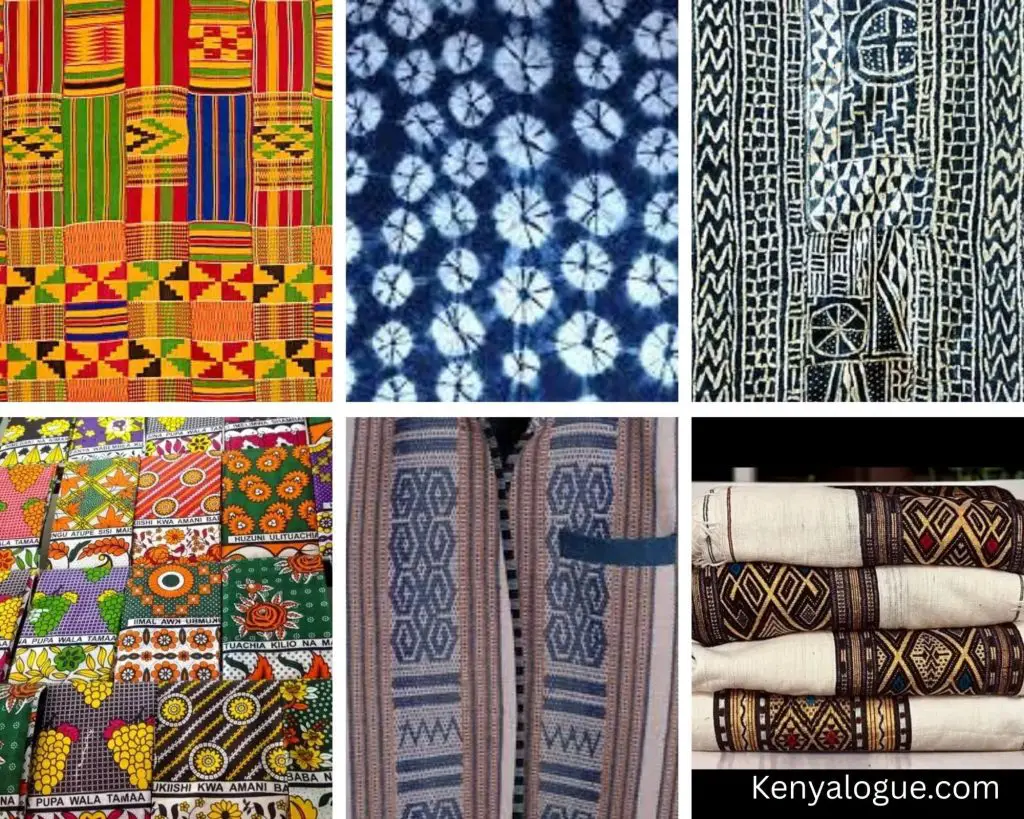
Africa’s vibrant story isn’t written only in words—it’s woven, dyed, stamped, and embroidered into cloth. From the sun-soaked looms of Ghana to the hand-pounded bark cloths of Uganda and the geometric raffia of the Congo, African fabrics carry the colors, symbols, and spirit of their people.
“Fabrics of Africa” is a curated journey through the continent’s diverse textile traditions—each fabric reflecting a region’s history, identity, artistry, and purpose. Whether it’s the regal shimmer of Bazin from Mali, the message-bearing Kangas of East Africa, or the bold threads of Kente, these fabrics speak volumes without saying a word.
Dive in, and discover 40+ remarkable textiles that continue to dress, unite, and express Africa’s many cultures—one stitch at a time.
Adire (Nigeria)
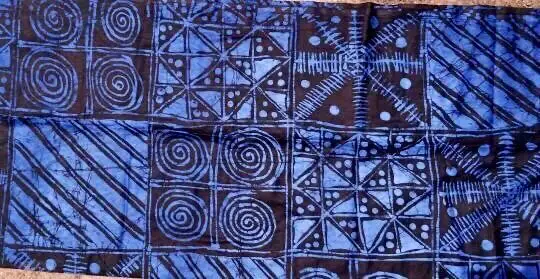
Adire
A traditional indigo-dyed cloth made by Yoruba women using resist-dyeing techniques. Patterns are created through folding, tying, or using cassava paste to block dye. The result is a bold, geometric, and often symbolic design.
Aso Oke (Nigeria)

Aso Oke
Worn by the Yoruba people, Aso Oke is a handwoven fabric used for special occasions like weddings and festivals. The name means “top cloth,” reflecting its prestige. It’s often richly textured, metallic, and woven in narrow strips.
Shweshwe (South Africa)
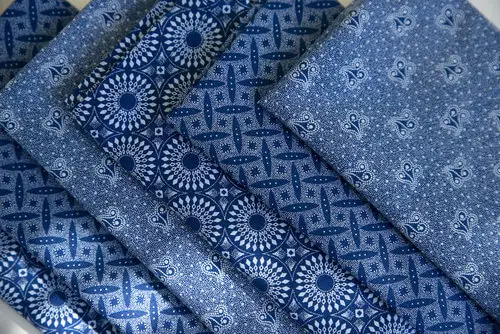
Shweshwe
A printed cotton fabric known for its intricate patterns and vibrant indigo hues. Originally brought by European settlers, it’s now a symbol of African heritage, especially among Xhosa women. The fabric is stiff when new but softens with washing.
Ankara – West & Central Africa (Pan-African Popularity)
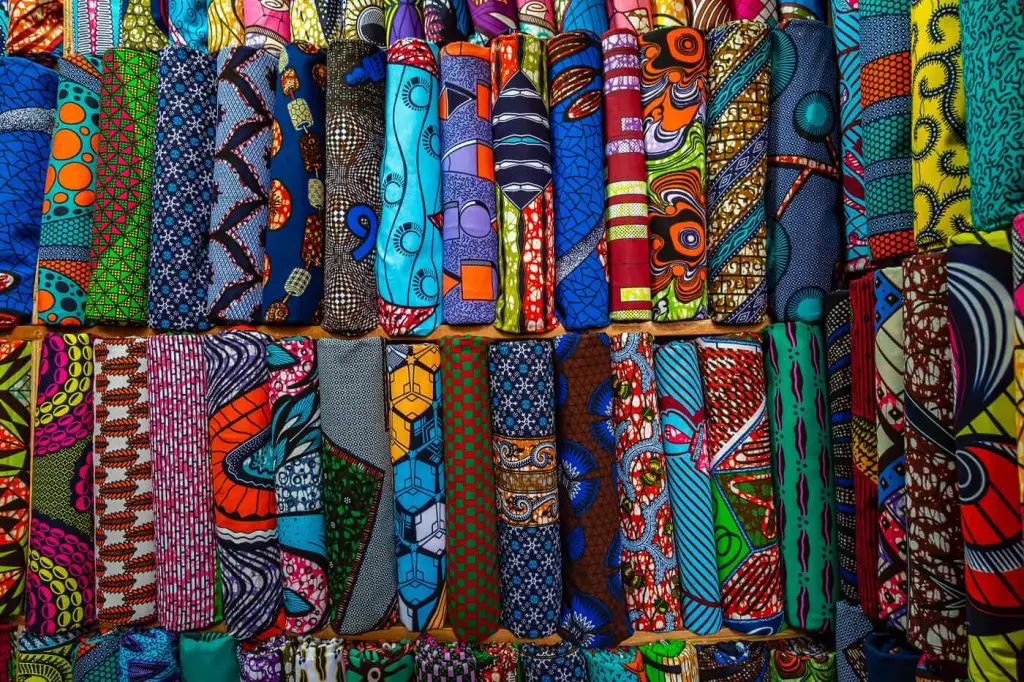
Ankara
A vibrant, printed cotton fabric known for its bold colors, intricate patterns, and cultural symbolism. Though its origins trace back to Dutch wax prints, it was embraced across West and Central Africa and has become a staple in African fashion, identity, and self-expression.
Kikoy (Kikoi) – Kenya / East Africa
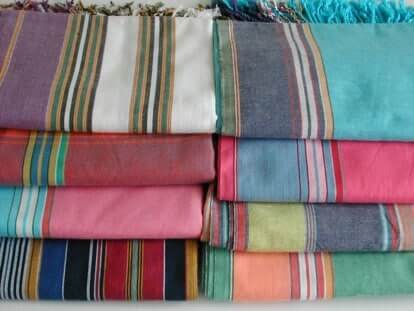
Kikoy (Kikoi)
A colorful, striped cotton wrap traditionally worn by Swahili men on the East African coast. Its soft, breathable fabric makes it ideal for beachwear or everyday use. Today, it’s also a popular souvenir used as scarves, skirts, or towels.
Kanga – Kenya / Tanzania
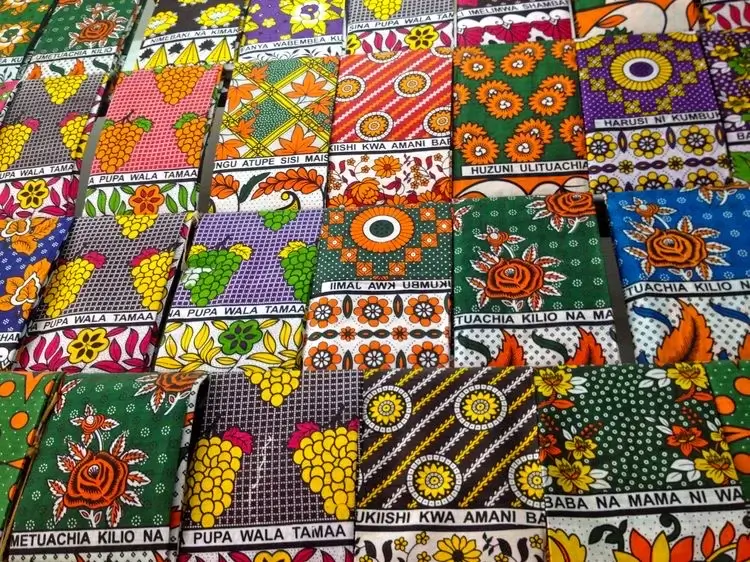
Kanga
Brightly colored rectangular cotton fabrics featuring bold prints and Swahili proverbs or messages. They are often worn by women as wraps or headscarves and serve both practical and expressive roles in East African culture.
Chitenge (or Kitenge) – Zambia / Malawi / DRC / East Africa
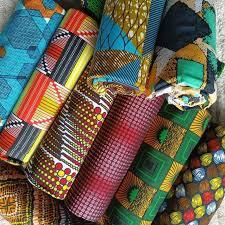
Chitenge (or Kitenge)
A wax-printed cotton fabric widely used for clothing in many East and Central African countries. It’s often tailored into dresses, shirts, or head wraps and reflects personal identity and celebration. Designs are bold, colorful, and culturally inspired.
Samakaka – Angola (Muila People)
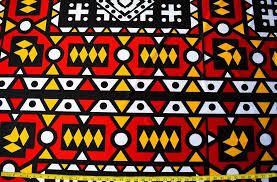
Samakaka
A striking, geometric-patterned fabric that originates from the Muila people of Angola. It is instantly recognizable by its vivid colors—often red, black, yellow, and white—and its bold, symbolic motifs that reflect cultural heritage and tribal identity.
Mudcloth (Bogolanfini) – Mali
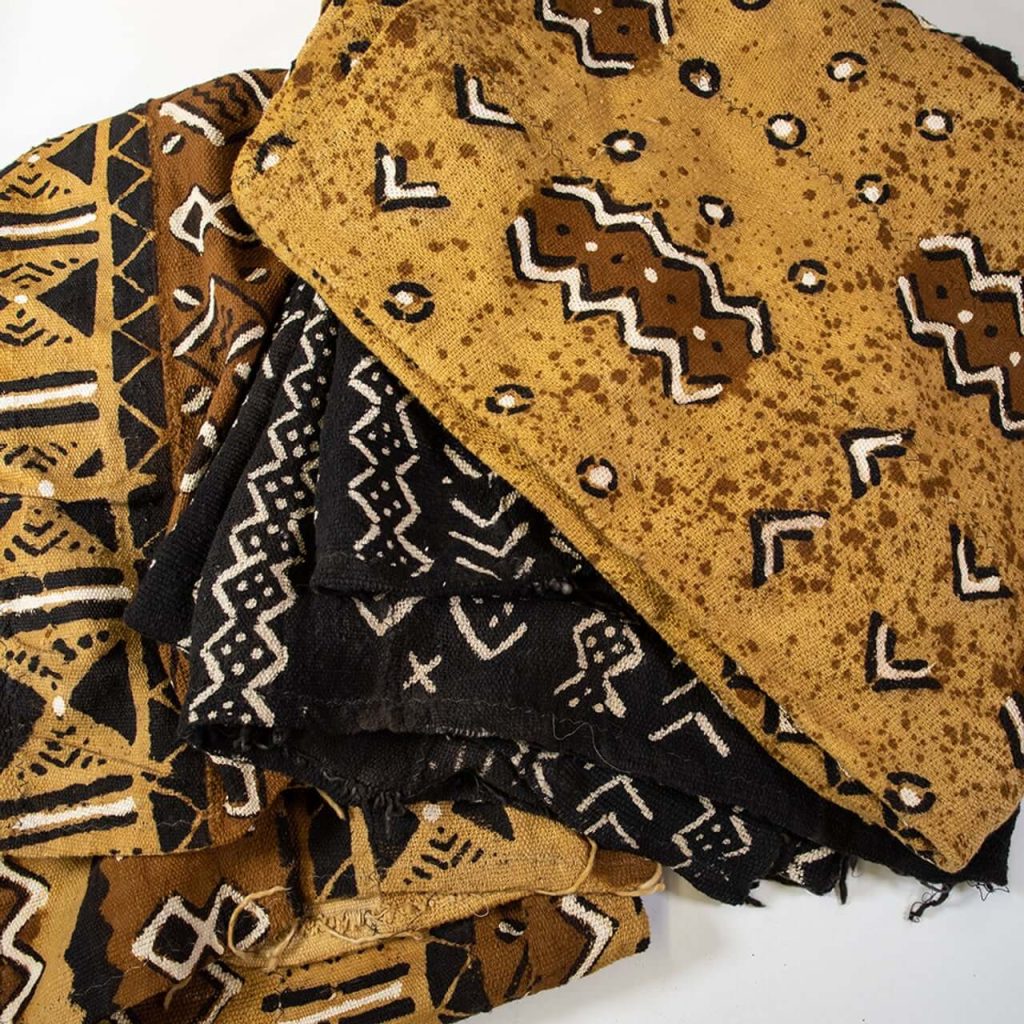
Mudcloth (Bogolanfini)
A handwoven cotton fabric dyed with fermented mud to create symbolic patterns. Traditionally worn by hunters and warriors, it’s deeply rooted in Bambara culture. Each design has meaning, often connected to historical or spiritual themes.
Sanyan – Nigeria (Yoruba)
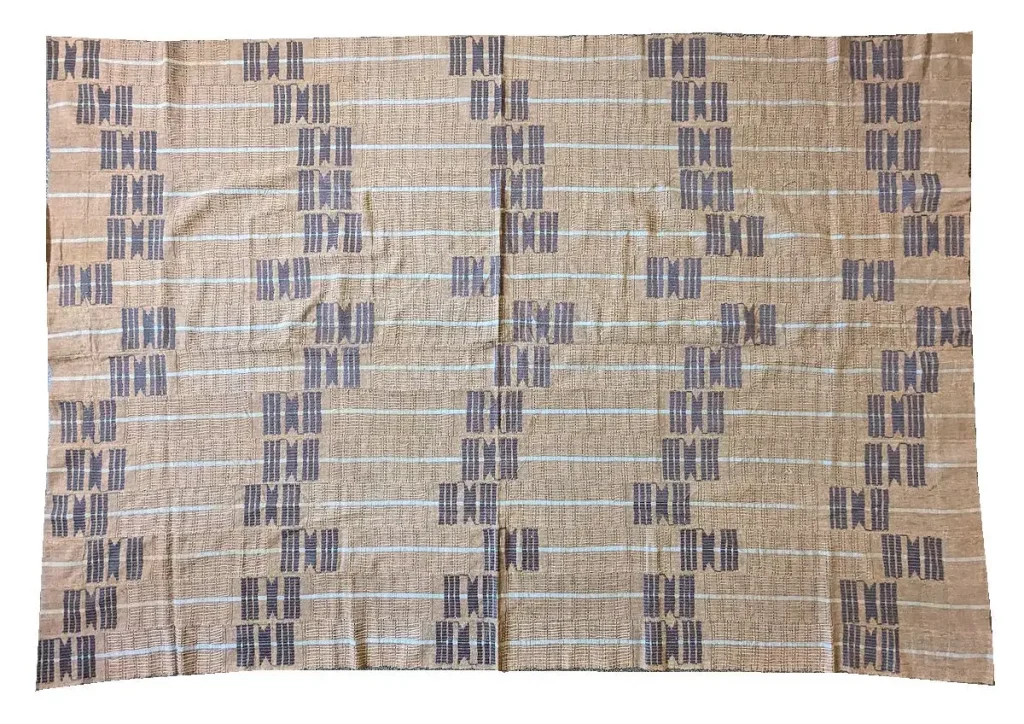
Sanyan
A luxurious, silky fabric woven from wild Anaphe silk and cotton, traditionally used by Yoruba nobility. It features a shiny texture and soft earthy tones like beige and brown. Sanyan is often reserved for high-status ceremonies.
Shemma (or Shamma) – Ethiopia / Eritrea
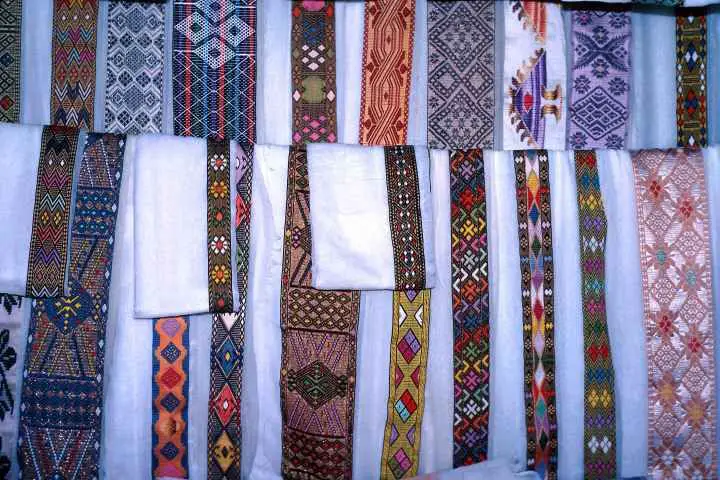
Shemma (or Shamma) – Ethiopia / Eritrea
A traditional handwoven cotton fabric commonly used to make long, flowing garments worn by both men and women. Lightweight and breathable, it is often worn during religious holidays and celebrations. The fabric usually features white as a base with colorful borders called tibeb.
Ntoma – Ghana

Ntoma
A general term in Ghana for any printed cloth, particularly the brightly colored wax prints worn daily or during special events. It is often given as a gift and carries cultural symbolism in its colors and motifs. Ntoma is used in tailoring everything from dresses to headscarves.
Faso Dan Fani – Burkina Faso

Faso Dan Fani
Faso Dan Fani, meaning “the woven cloth of the homeland” in Dioula, is a handwoven cotton fabric that symbolizes national pride and cultural identity in Burkina Faso. Traditionally woven in strips and joined together, it features earthy colors and bold stripes or checks, often dyed with natural pigments.
Barkcloth – Uganda
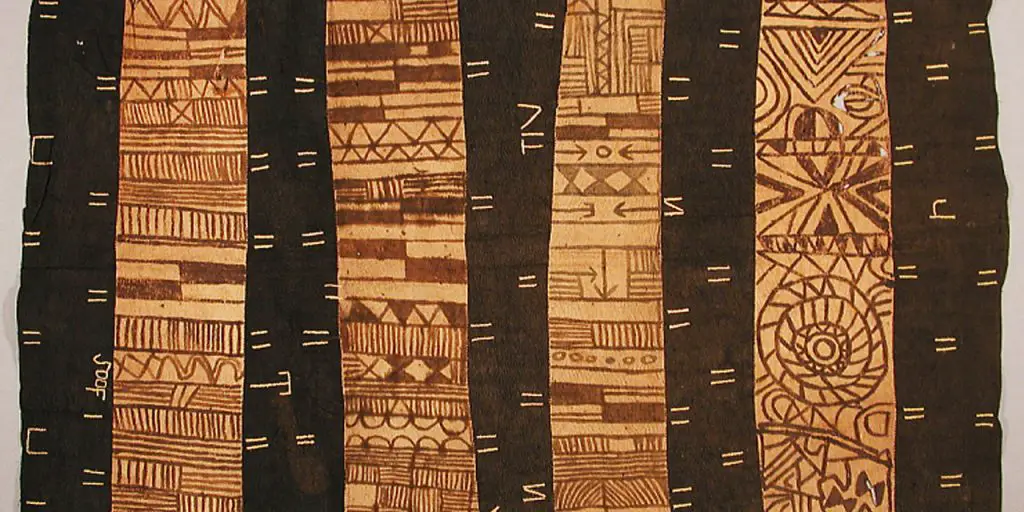
Barkcloth
Barkcloth is made by beating the inner bark of the mutuba tree until it becomes soft and pliable. Traditionally worn by the Baganda people, it is earthy brown and used in rituals, burials, and royal ceremonies. This eco-friendly fabric is one of the oldest known textiles.
Lamba – Madagascar
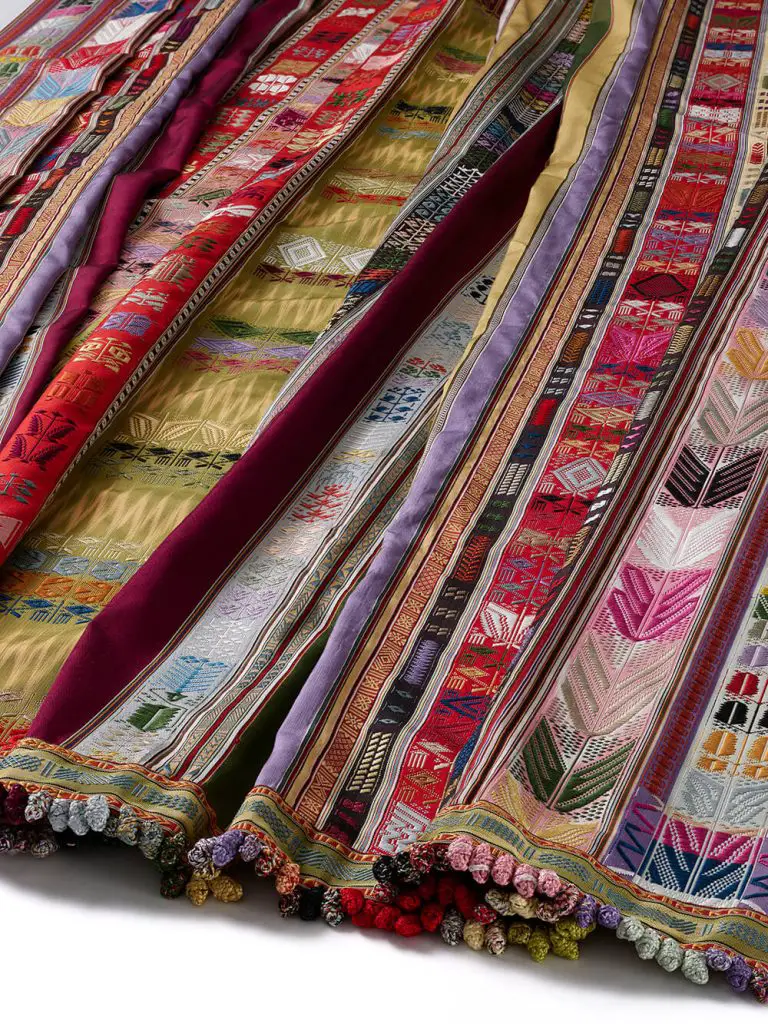
Lamba
A rectangular piece of cloth worn by both men and women in Madagascar. It can be used as a wrap, shawl, or even burial cloth, and often carries regional patterns and cultural significance. Some lambas are finely woven and passed down through generations.
Gabi – Ethiopia
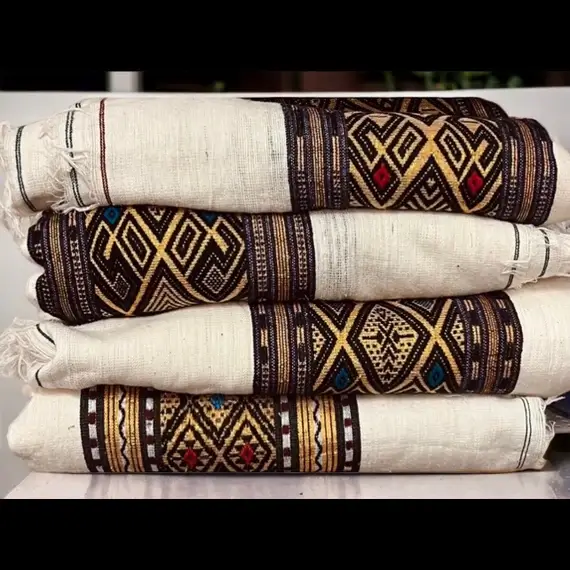
Gabi
A thick, layered cotton shawl traditionally worn by Ethiopian men in cooler highland regions. It is larger and heavier than the shemma, often handspun and woven with great care. Gabis are also given as gifts during important life events.
Gomesi fabric – Uganda
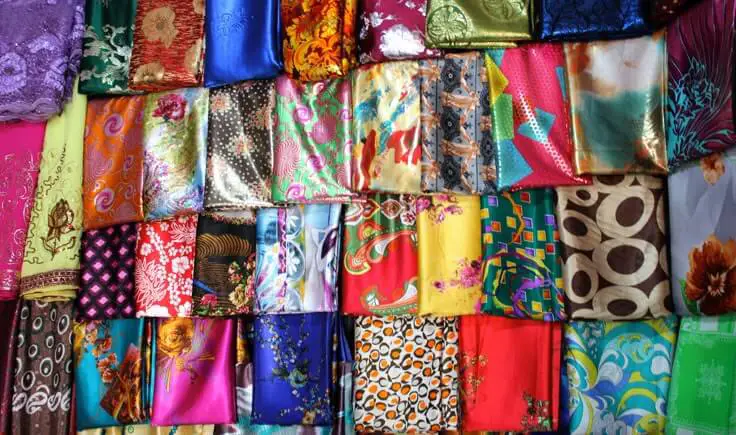
Gomesi
A formal Ugandan dress for women, this fabric is often shiny and brightly colored, typically satin or silk blend. The gomesi is worn during traditional ceremonies, with puffed sleeves and a square neckline. The fabric helps give structure and elegance to the iconic outfit.
Baoulé cloth – Côte d’Ivoire
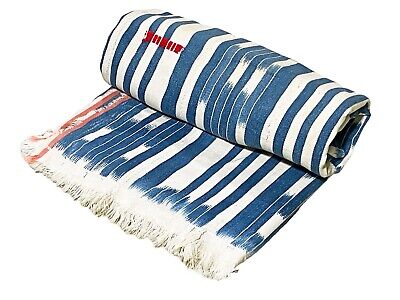
Baoulé
This fabric is handwoven by the Baoulé people, using narrow looms and traditional techniques passed down through generations. Often made with cotton and dyed in subtle tones, it features geometric patterns and is worn for both daily life and ceremonies. It also reflects Akan cultural symbolism.
Kenté kita – Côte d’Ivoire
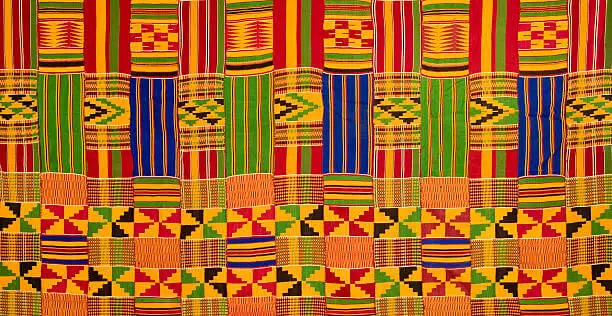
Kenté kita
Kita cloth is a variant of Kente, woven by the Akan people of Côte d’Ivoire using similar techniques and patterns. It’s made from narrow strips of colorful fabric sewn together. Like Ghanaian Kente, it’s worn during important cultural and ceremonial events.
Agbada fabrics – Nigeria
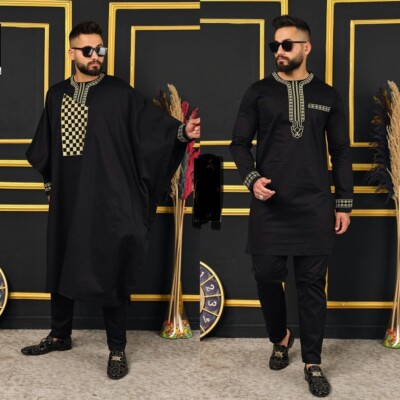
Agbada fabrics
Wide-sleeved robes worn by men across West Africa, especially among the Yoruba, Hausa, and Igbo. The fabrics used are typically luxurious—ranging from Aso Oke to damask or lace—and are often richly embroidered. Agbada outfits symbolize status and elegance.
Dashiki – West Africa
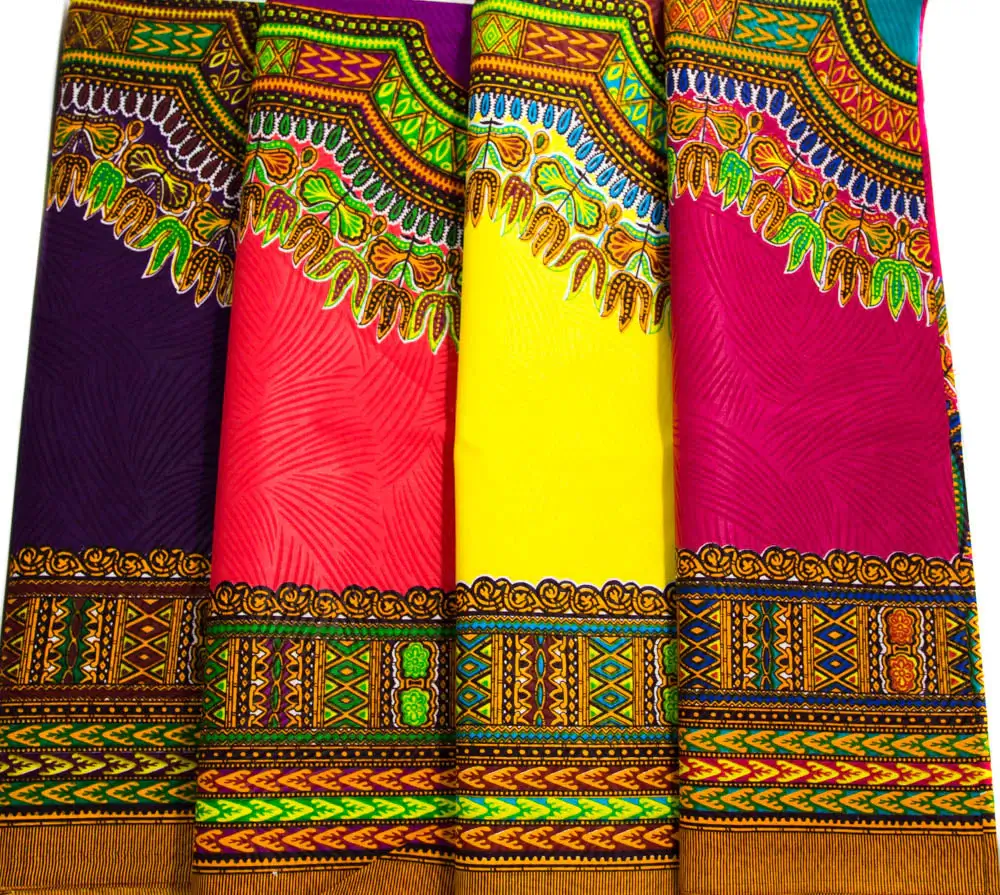
Dashiki – West Africa
A colorful, loose-fitting tunic that originated in West Africa, with its name derived from the Yoruba word “danshiki.” Known for its elaborate neck embroidery and bold, symmetrical patterns, the Dashiki is both comfortable and visually striking.
Isidwaba fabric – South Africa (Zulu)
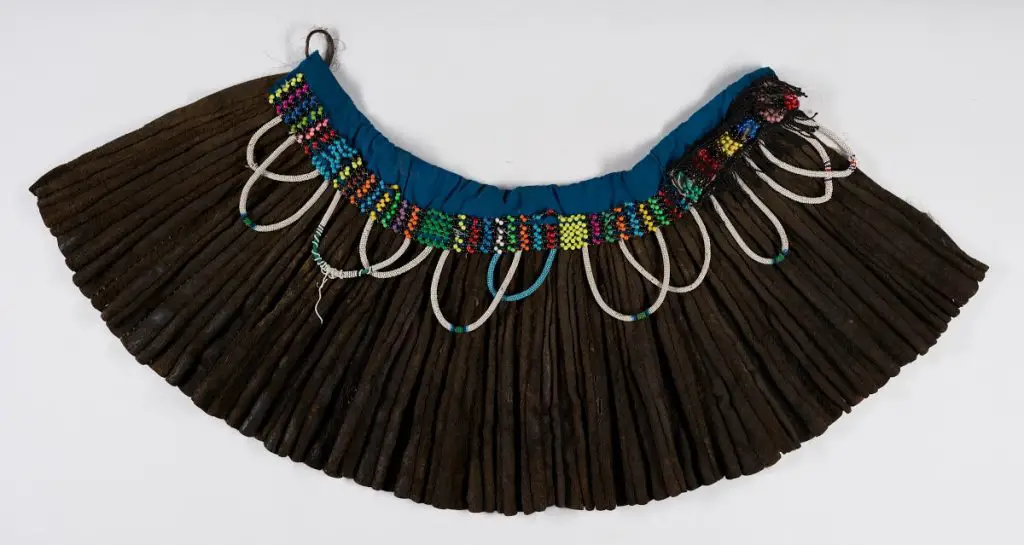
Isidwaba
A traditional Zulu skirt made from leather or heavy fabric, often dyed black and decorated with colorful beads. Worn by married women, it signifies respect, tradition, and womanhood. The fabric is treated to be durable and ceremonial.
Ndao – Central African Republic
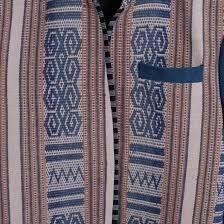
Ndao
A locally crafted cloth that incorporates natural dyes and traditional geometric patterns. It is worn during important community gatherings and dances. While lesser known globally, it holds deep cultural roots among Central African tribes.
Susu indigo cloth – Guinea
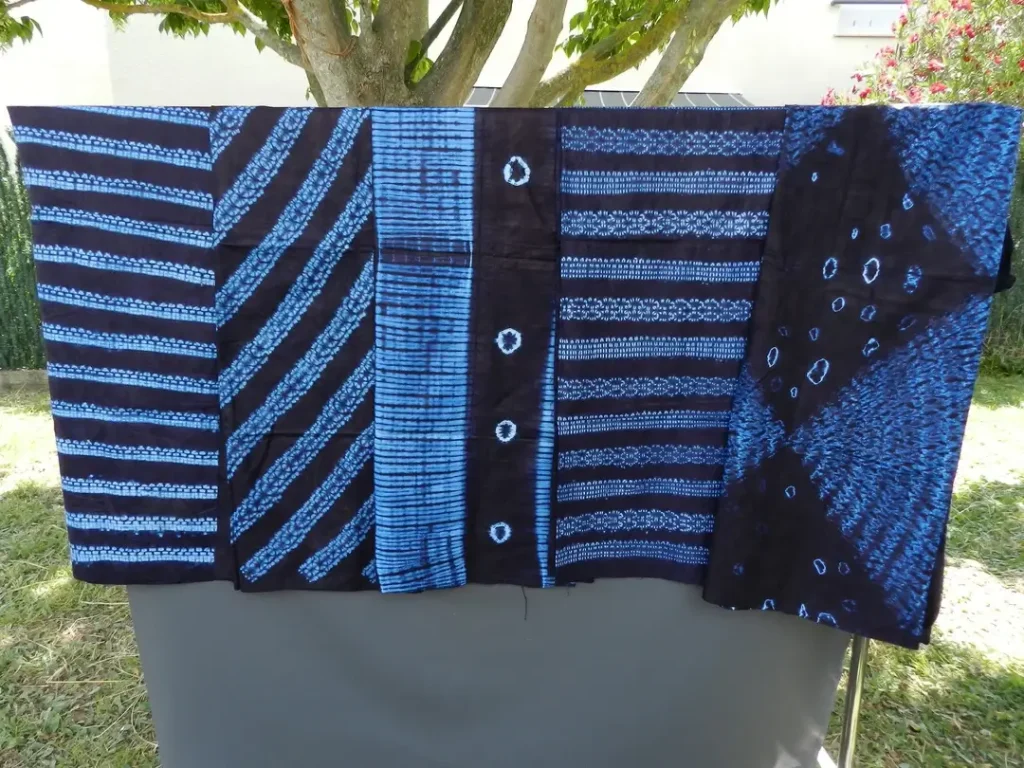
Indigo cloth
Made by the Susu people, this cloth is dyed using natural indigo in a series of steps that create deep, shimmering hues. The designs often involve resist techniques to create lighter patterns. These fabrics are highly valued in West African fashion and rituals.
Bazin – Mali (Also Popular Across West Africa)
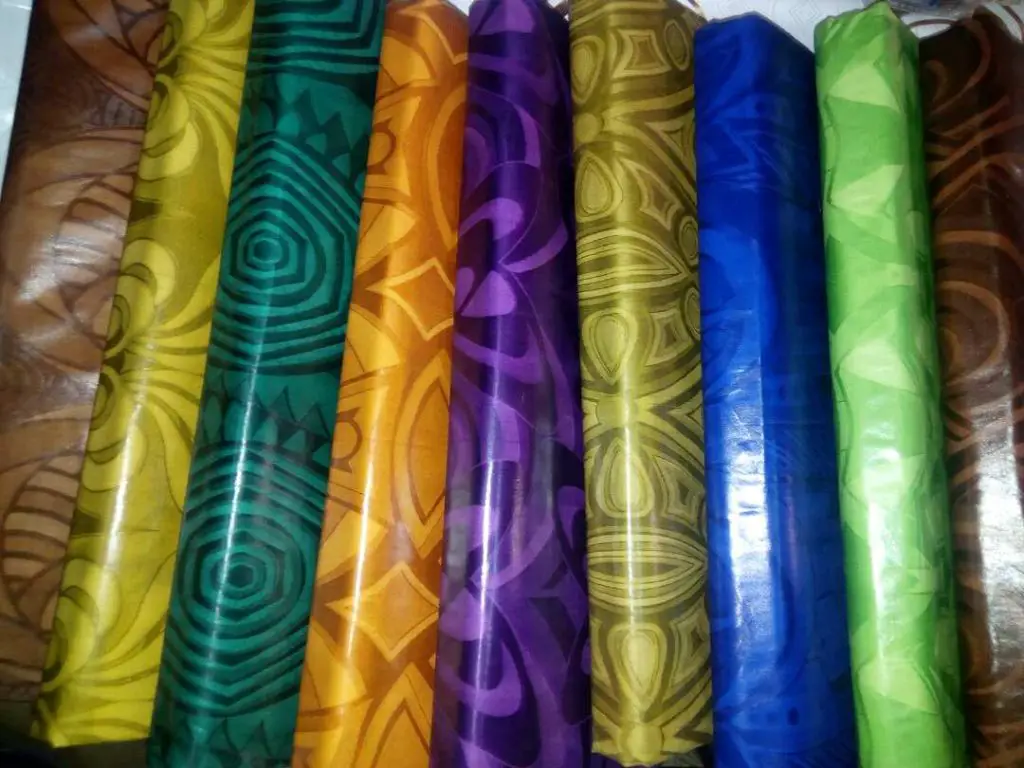
Bazin
Also known as Bazin Riche, is a high-quality cotton fabric that is dyed and polished to create a luxurious, shiny, almost satin-like finish. Originally white cotton, Bazin becomes vibrant and glossy through a labor-intensive tie-dyeing and starching process, often done by hand using traditional techniques in Mali, where it’s most culturally rooted.
Wodaabe embroidery – Niger / Nigeria
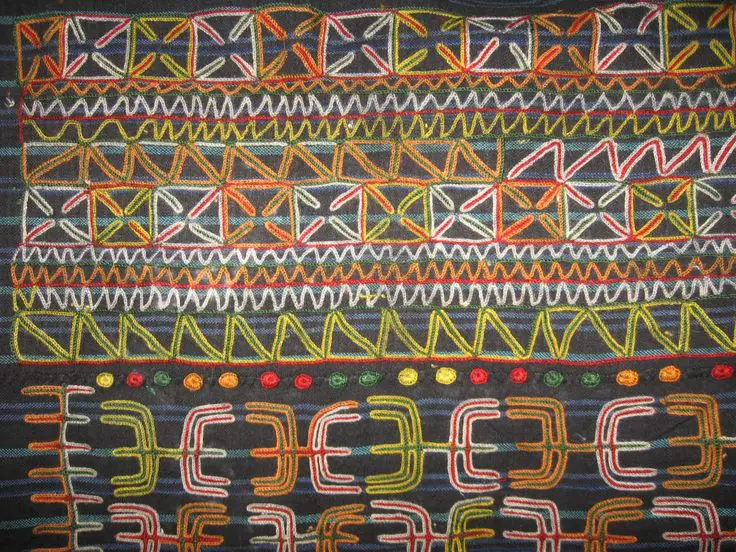
Wodaabe embroidery
The Wodaabe are known for their finely detailed embroidery on garments like tunics and veils. Using bold geometric and symbolic motifs, these designs are stitched into cotton or leather. Clothing is a key part of their visual expression, especially during courtship dances.
Bamileke – Cameroon
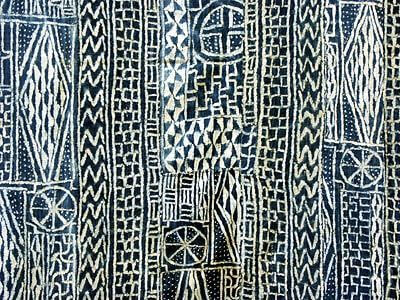
Bamileke
Traditionally worn by the Bamileke people, the fabric includes elaborately embroidered or beaded textiles used in royal ceremonies and festivals. Often made from raffia or cotton, these fabrics showcase prestige, wealth, and identity. They are also used in costumes for the famous Elephant Mask dance, reflecting the community’s deep artistic heritage.
Gara Tie and dye – Sierra Leone
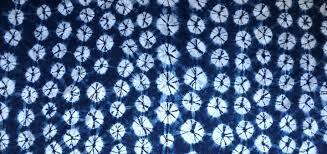
Gara Tie and dye
Gara Tie and dye is a popular textile art in Sierra Leone, created by folding and binding fabric before dyeing it in vibrant colors. Each artisan has a unique technique, resulting in one-of-a-kind designs. The fabric is used in everything from dresses to headscarves and home décor.
Boubou fabric – West Africa
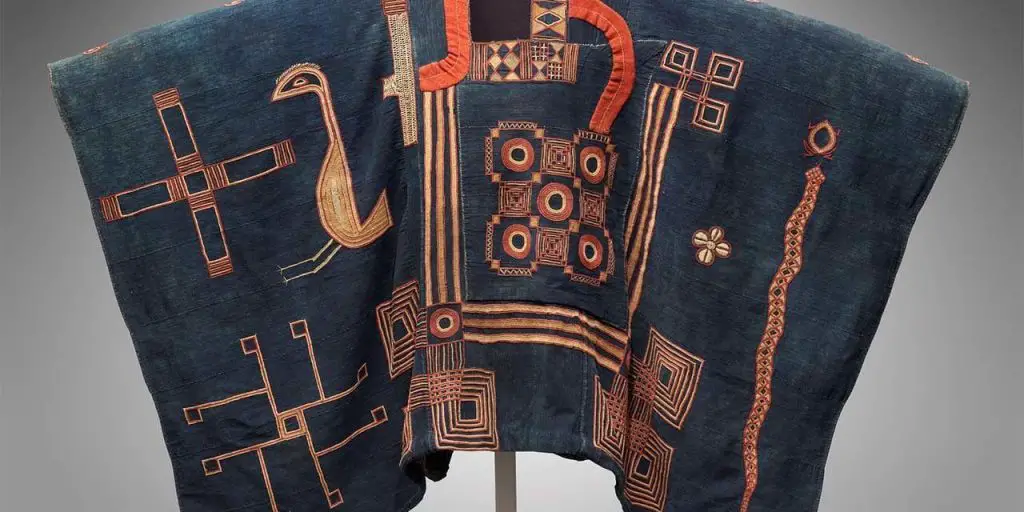
Boubou fabric
The boubou is a flowing robe worn across West Africa, and the fabrics used—such as brocade, damask, or wax prints—are often selected for their luxurious appearance. Boubou fabric is associated with formality, spiritual gatherings, and festive occasions. It’s worn by both men and women in various styles.
Toghu – Cameroon
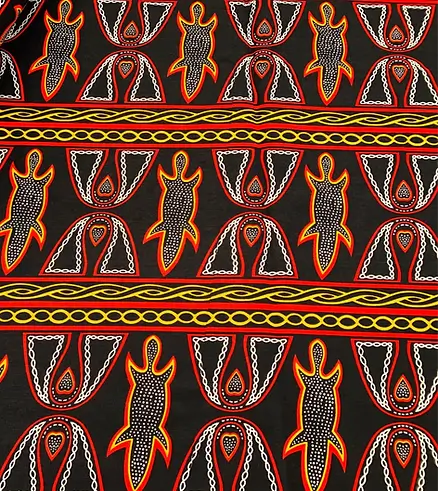
Toghu – Cameroon
Also spelled Atoghu, is a richly embroidered fabric traditionally worn by royalty and nobility among the Grassfields peoples of northwest Cameroon, such as the Bamenda, Bafut, and Kom. Originally reserved for kings and elders, it features black velvet adorned with vibrant, hand-stitched patterns in red, yellow, green, and white threads—each color carrying symbolic meaning.
Abacost Fabric – Democratic Republic of Congo
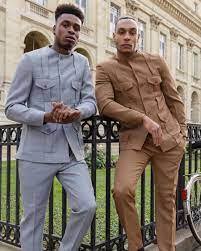
Abacost Fabric
Worn with the now-iconic abacost (a jacket replacing the Western suit), this lightweight fabric symbolized Zairian nationalism during Mobutu’s regime. Often made of cotton or blended suiting materials, it represented a political and cultural shift away from colonial dress norms.
Gèlè Fabric – Nigeria
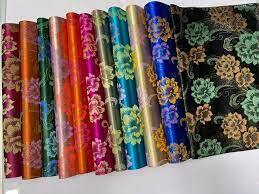
Gèlè
The stiff, often shiny headwrap fabric worn by Nigerian women during formal events and ceremonies. Typically made of damask, jacquard, or Aso Oke, it’s artistically folded and tied to match an outfit. It symbolizes elegance, pride, and cultural identity.
Luntaya acheik – Sudan (adopted)
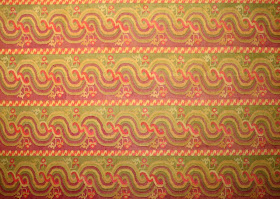
Luntaya acheik
Although Acheik originated in Myanmar, it’s been adopted in certain Sudanese cultural expressions through the Sudanese diaspora. It features undulating waves and vibrant, repetitive patterns. In Sudan, it’s sometimes used for special tailoring and women’s festive garments.
Dera fabric – Eritrea / Ethiopia
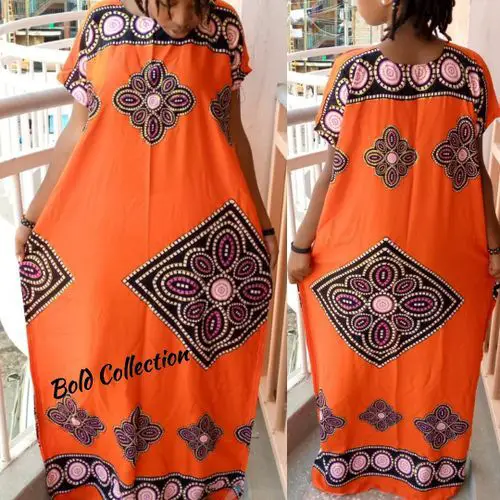
Dera
A richly embroidered cotton or linen fabric used for traditional men’s tunics. These are often ankle-length with decorative necklines and cuffs, worn during weddings and major holidays. The fabric is valued for its clean lines and cultural symbolism.
Kuba (DRC Congo)
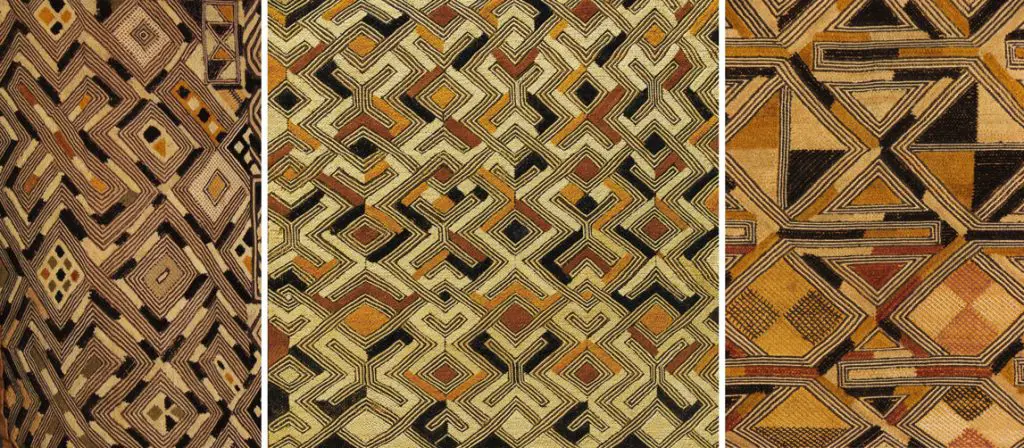
Kuba
A renowned raffia textile created by the Kuba people using intricate cut-pile techniques, embroidery, and applique. Each piece features bold, geometric patterns that reflect social status, lineage, or events. Originally used for skirts, mats, or wall hangings, it is now also admired in global art and fashion circles.
Tera-Tera – Niger
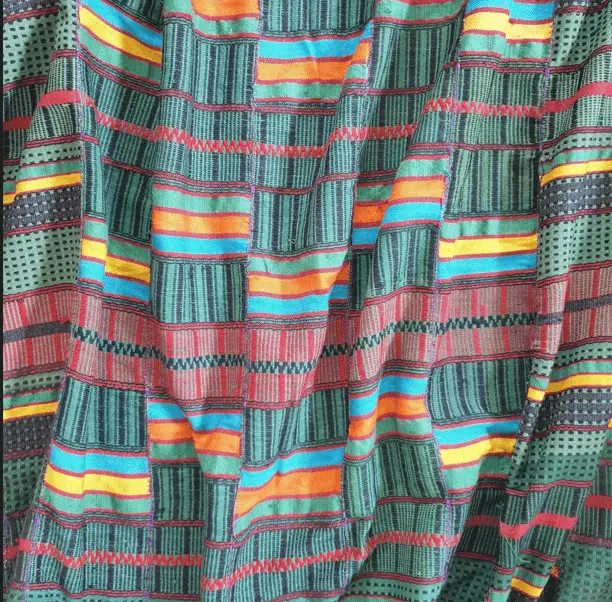
Tera Tera
A lightweight, finely woven cotton fabric popular in Niger, particularly among the Hausa and Tuareg communities. Known for its vibrant solid colors—often deep purples, blues, greens, or yellows—it is commonly tailored into flowing robes (boubous) and head coverings.
Chamba Cloth – Nigeria/Cameroon (Chamba people)
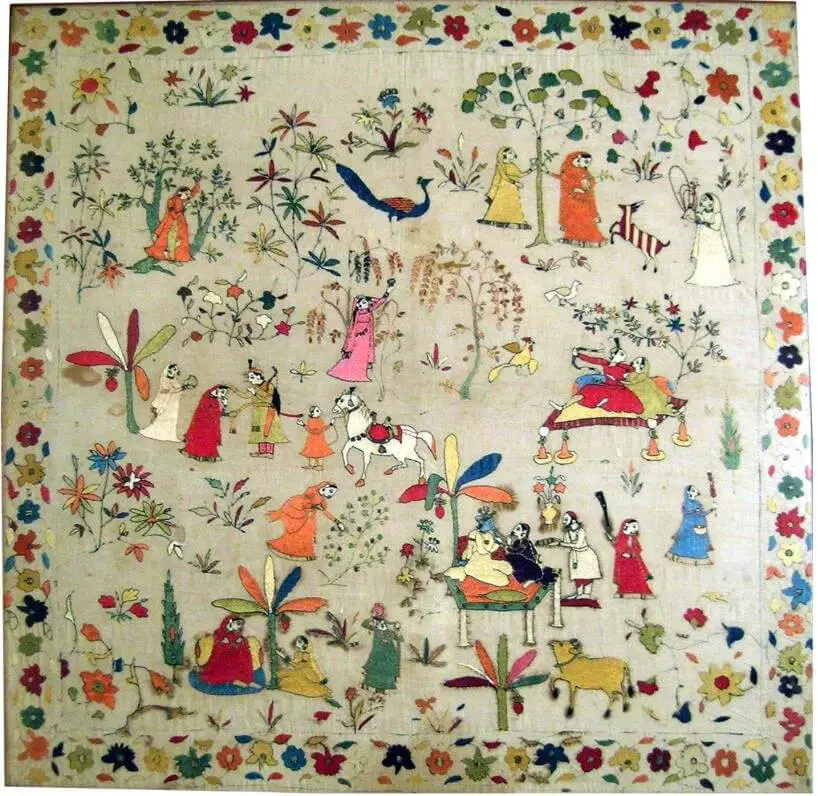
Chamba Cloth
A handwoven textile produced by the Chamba people, known for its distinctive abstract designs and spiritual symbolism. The patterns often incorporate nature, animals, or ancestral motifs and are used in traditional ceremonies. These fabrics hold cultural significance and are sometimes worn by leaders or during rituals.
Ukara Ekpe – Nigeria (Igbo People, Cross River Region)
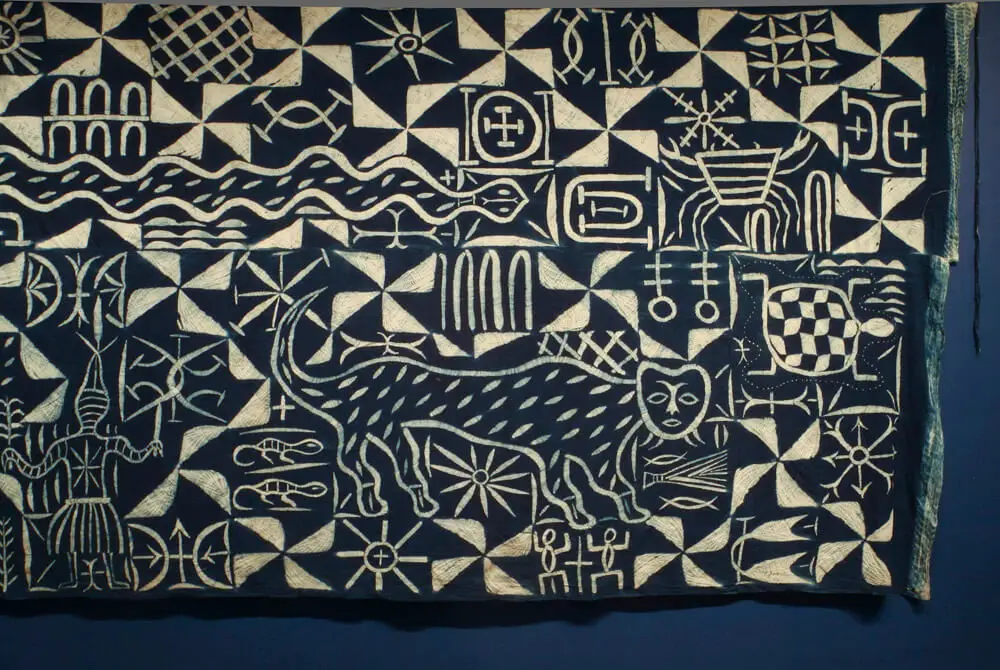
Ukara Ekpe
A sacred, hand-dyed fabric associated with the Ekpe secret society of the Igbo and Efik people in southeastern Nigeria. Traditionally dyed in indigo blue and later in rich red or black, the fabric is embroidered or resist-dyed with symbols representing power, spirituality, and status—such as leopards, masks, and ancestral motifs.
Isi-Agu – Nigeria (Igbo People)
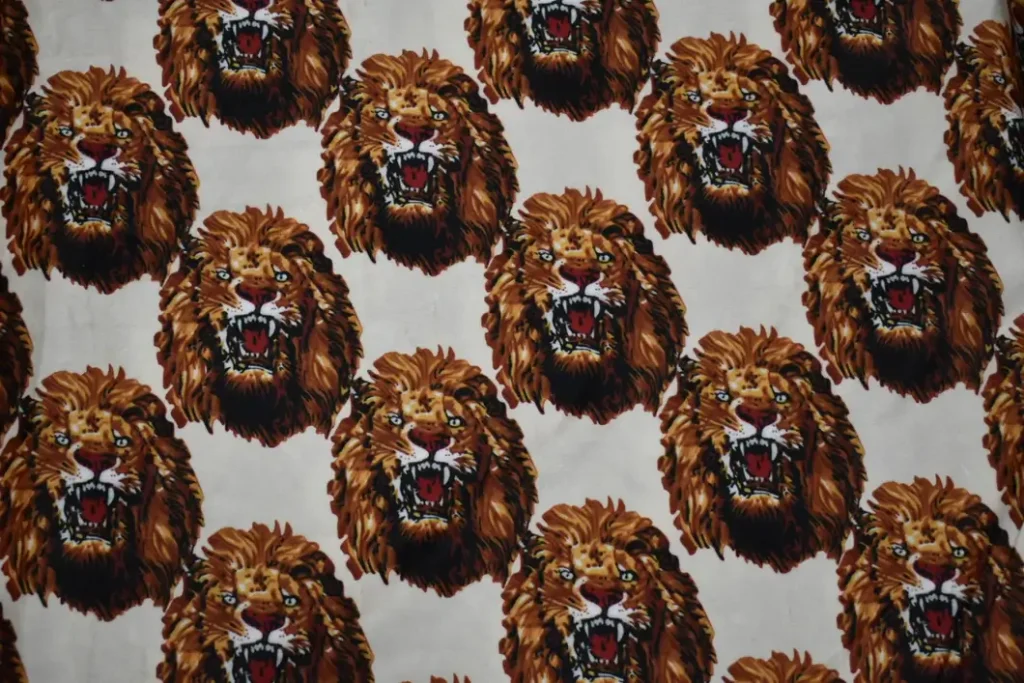
Isi-Agu
Isi-Agu, meaning “lion’s head” in Igbo, is a richly patterned fabric traditionally worn by Igbo men to signify status, pride, and cultural identity. The fabric features a repeating motif of lion heads, symbolizing bravery, authority, and leadership.
